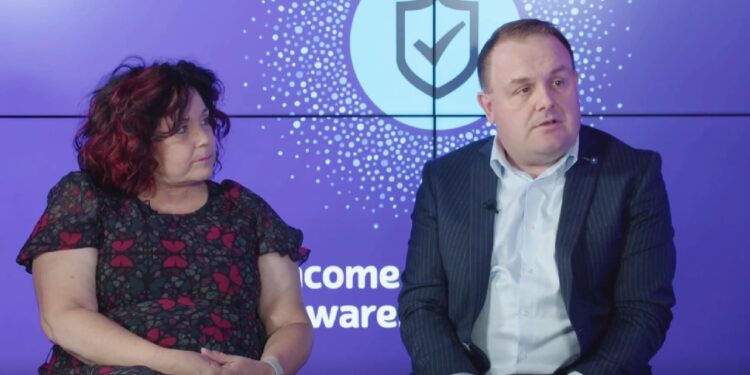While delays in protection underwriting are commonplace now due to increased GP workloads created by the pandemic, such waits can be turned into a positive – and may even save a life.
This is according to Tracy Boyd, mortgage and protection consultant Mortgage Hub Expert, who was participating in a panel debate on the fourth day of the Income Protection Task Forces’ Income Protection Awareness Week.
Keeping clients warm
When asked about what advisers were seeing out there with regards to protection underwriting delays and how they manage the process, Mike Roberts, financial adviser at Pennymatters (pictured left), told the online audience these waits are very common now.
He said the client can lose a bit of interest, so it is something that advisers have got to manage.
“Be very clear upfront in terms of – ‘This is the process. Unfortunately, we’ve got to write to your doctor. You may even need a medical’. But we work hard to manage that process and keep the client updated so they are not losing interest or getting frustrated.”
According to Roberts, advisers can also turn to technology to help.
“I think providers are trying their best not to use GP reports if they can because they add a huge delay, but phone the doctor, keep the client updated and keep them warm basically. That’s all you can do. The time it takes is the time it takes.
“But if you’ve spent the time doing the groundwork and presenting the information in the right way then hopefully the process won’t take too long.”
Tracey Boyd, mortgage and protection consultant Mortgage Hub Expert, (pictured right) agreed, adding she suggests client contact their GP to speed the process along.
“Because you get ‘the invoice has got to be raised or we’re not going to do that report until they’ve paid the invoice’,” Boyd continued.
“So by introducing the client into the scenario and getting them to ring their GP, I find the GPs are a lot more responsive to a client.”
Flipped into a positive
But Boyd added these underwriting waits can be “flipped” into a positive, citing the example of a recent client.
“A couple of weeks ago I had a young chef contact me that wanted income protection, and when I went through the application I knew we were potentially borderline in getting that cover.
“It was because of BMI. The provider got a nurse screening for this guy and told him he urgently had to go and see his GP and this 27 year old lad with high blood pressure, had serious problems ahead of him.
“He was borderline diabetic. He didn’t have a clue. They could have saved his life.
“He didn’t get his income cover but I feel I did a great job for that guy. I was really pleased with that.
“So it can be a positive. This guy is now on the road to getting fit and healthy, losing a bit of weight and I’m checking in with him every three months to see how he’s going.
“We can always turn these things into a positive and I know it’s hard and it can be a clunky job at times, but it’s about communicating and keeping them warm.”






